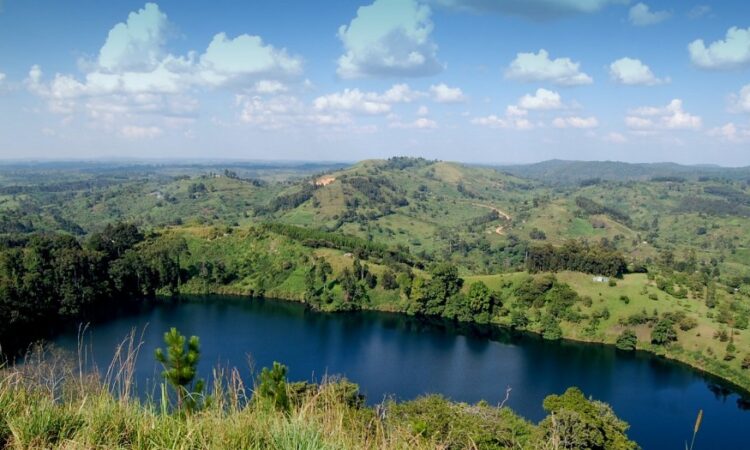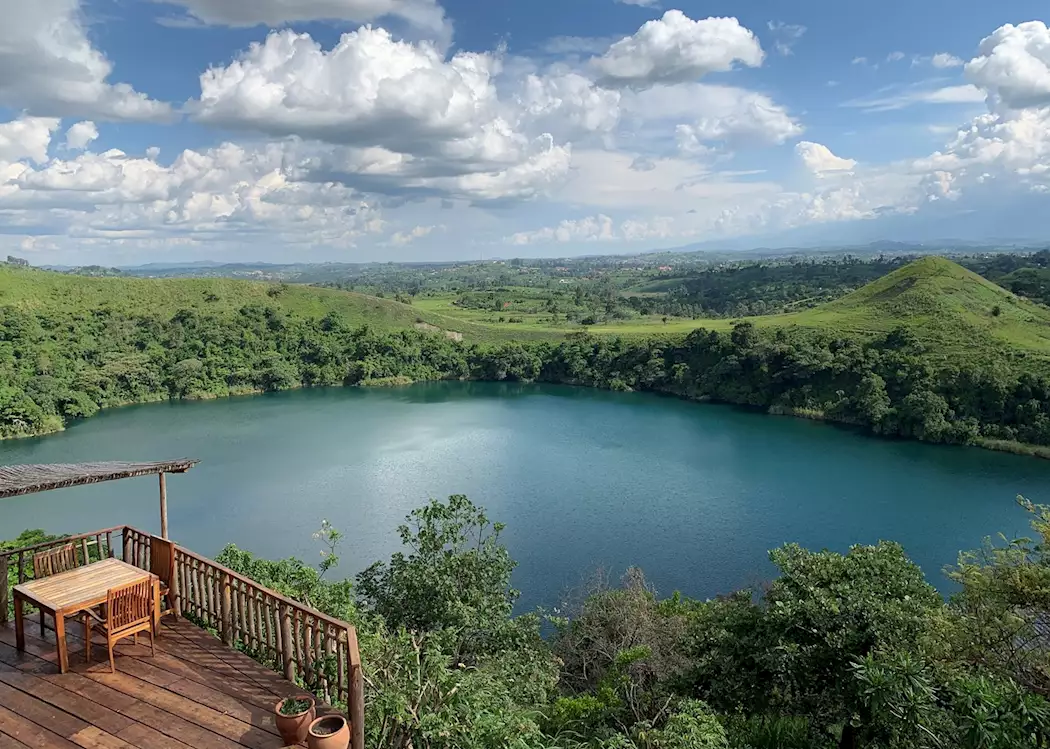Exploring Uganda’s Crater Lakes: Uganda is a popular safari location due to the numerous volcanic mountains formed as a result of volcanic eruptions. Crater lakes in Uganda date back 8,000 years. That is when they were produced as a result of volcanic activity, with magma cooling causing depressed symptoms, and water collecting over time, culminating in the formation of a basin lake known as a crater lake.

Picture that, viewing that some of the crater lakes in Uganda is a dream come true Uganda safari experience. The majority of these crater lakes are located in the western region of Uganda, within the famous Queen Elizabeth National Park, and their spectacular view is more than words can express, but it is lovely. Uganda features several big crater lakes, particularly in the western region of the nation, such as Fort Portal, Kabale, and others.
Throughout Western Uganda, there are several crater lakes. If you want to visit local safari sites, these might be an excellent setting for your entire vacation. The craters are also ideal sites to capture photographs throughout the tour, as follows:
Exploring Uganda’s Crater Lakes.
Lake Katwe in Queen Elizabeth National Park.
Lake Katwe, situated in the southern western part of Uganda, on the volcanic mountain opposite, is popular for the fact that it’s salty due to the tributary rivers that flow inwards but none that lead outwards, resulting in a lot of salt production taking place in the lake. The salt production process is something to observe on a Uganda wildlife safari.
It’s really worth seeing how our edible salt is made. There are also a variety of safari activities available in the lake, such as lake diving, nature walks around the lake, and dealing with the sight of watching animals such as elephants.
Because the majority of the residents mine salt, salt production is an essential source of income for them. They do, however, produce excellent handicrafts to compensate for their limited production. You may admire their exquisite accessories and enjoy learning how to create such beautiful pieces of art.
Another major crater is the lovely Lake Bunyonyi, the world’s second deepest lake and the deepest in Africa and Uganda. It consists of 29 islands and is located between the Kabale (1962m above sea level) and Kisoro districts in Uganda’s south-west. It is approximately 25 km long and 7 km broad. You are invited to visit at any time of year, as it is open to tourists all year. Camping is ideal for getting away from the hustle and bustle of city life for a spell.
Explore the Ndali-Kasenda Craters
Ndali Kasenda Crater Field is located near Fort Portal and the Kibale Forest National Park. It’s simpler to get there on foot. There are several crater lakes to see along this 10-kilometer area. The famed ‘Top of the World’ crater path is a three-hour guided tour of the whole crater region. There is much more to see and learn along this walk with your appointed guide.
This truly is a bit of heaven that not many people have seen. The vista of the Rwenzori Mountains, the Kibale rain forest, and the vast tea fields will take your breath away. Mountain bikes may also be used to navigate these gaps. The excitement of trekking this region grows with each new crater you discover. There are several crater lakes in the vicinity. Lakes include Nkuruba, Lyantonde, Nyabikere, Nyinambuga, and Kifuruka. Make sure to include this on your next trip to Kibale National Park for chimpanzee trekking excursions.
Nyinambuga Crater Lake
The image of Lake Nyinambuga is on the 20000 Ugandan shilling note. It is a stunning location with the purest water. When you’re there, don’t miss out on the opportunity to dive in the lake and go fishing on a Uganda safari.
The exceptional Lake Nkuruba, located 45 kilometers from Uganda’s cleanest district, Fort Portal, is a place where you can take on bicycle tours, nature walks around the nature reserves adjacent to it, resulting in a view of the primates, the distinctive red colobus, velvet, and the black and white colobus monkeys offering you a feeling of being in the wild, and a walk to the market is an excellent intercultural dances from diverse cultures can help you fit in and enjoy every moment.
Kyaninga Crater Lake
Kyaninga Crater Lake is found near Kyaninga Lodge, which is totally placed immediately above the crater, is quite prominent and cannot be missed. Walking out of the valley reveals how Ugandans live simply. There are tour guides at the resort who may accompany you on a stroll.
There are around 50 crater lakes in Uganda. Some may be salty and smelly, yet many have freshwater and gorgeous landscape. This proves that great and exquisite beauty was created 12,000 years ago.

Visiting Bunyaruguru Craters.
The craters are located on the western border of Queen Elizabeth National Park. Locals also refer to it as the Kichwamba crater fields since it is located on the Kichwamba cliff. The Bunyaruguru region has about 20 craters, the most notable of which is the Nkugute Crater Lake. Nkugute is located in Bunyaruguru County, under the newly established Rubirizi District. It is supposed to have assumed the shape of Africa in an appealing way.
The name Nkugute is from a Runyaruguru term meaning “swallow.” This term is derived from tales and old legends that have been passed down in the area for many years. It was said that the lake took the life of a boy and a girl every year.
As a result, the term ‘swallow’ was used. There was no evidence that the neighborhood report was real. Nkugute Crater Lake formed as a result of volcanic activity in the Bunyaruguru Volcanic Field, as seen by Kitagata hot spring in Sheema distinct. Other crater lakes in Bunyaruguru include the twin lakes Kyema and Kamweru, Mirambi and Katinda, Nyungu and Rwizongo, Lake Nkuruba, Lake Mafuro, Kamweru and Kyema, and Lake Kamuzuku.
In summary; Several of these crater lakes are located in western Uganda, near the Kibale and Queen Elizabeth National Parks. Your wildlife safari to Queen Elizabeth or chimpanzee tour in Kibale National Parks might include a visit to any of the craters. A half-day excursion to these crater lakes is an excellent way to spend your safari time and will provide you with amazing safari experiences.


